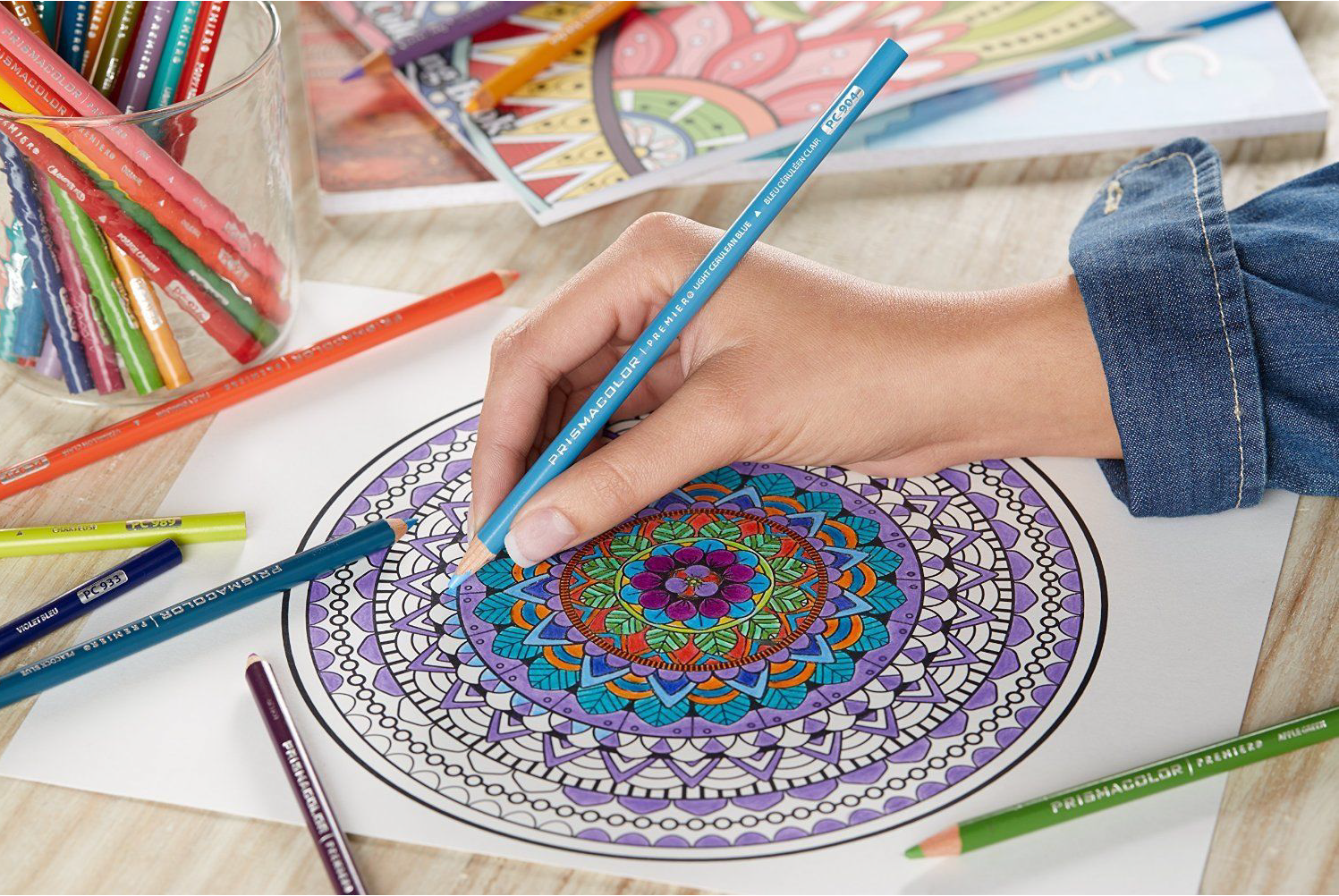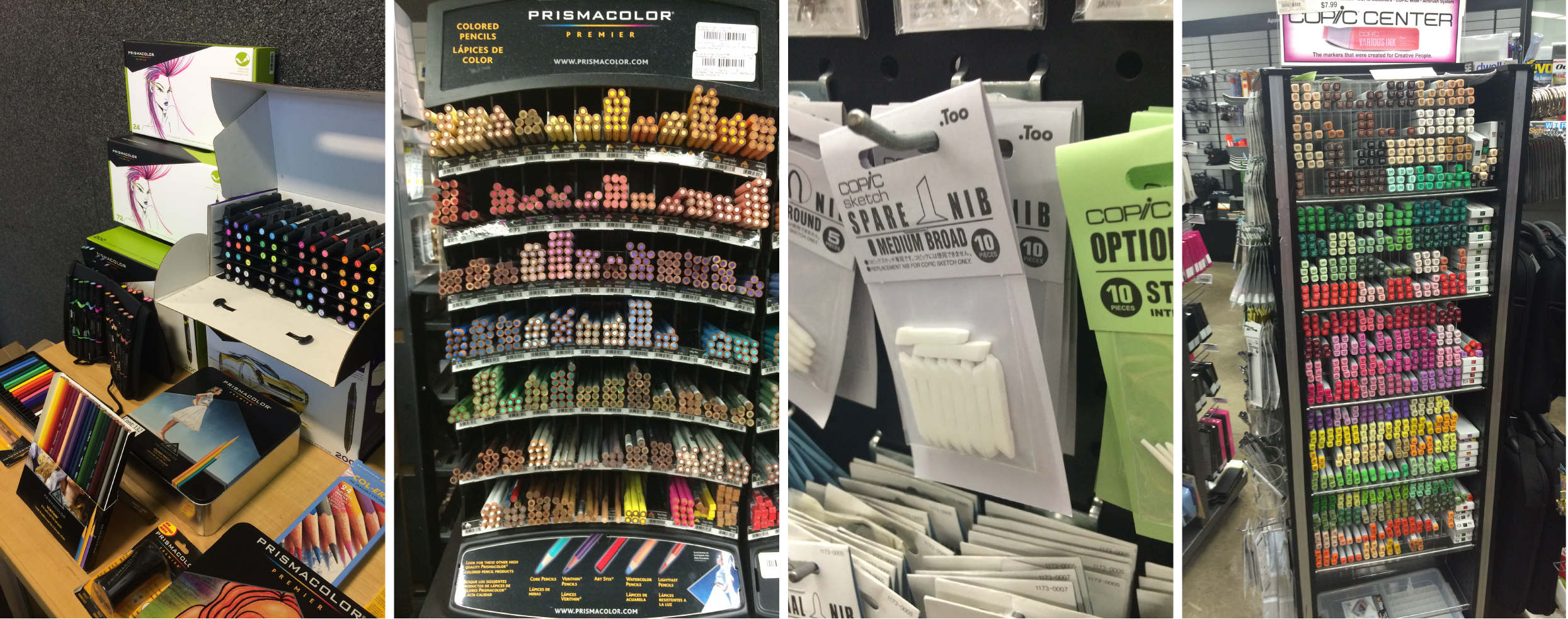Prismacolor
What place do analog art tools have in a digital future?
Combining strategy and design to help Prismacolor transition into a digital world.
Summary
Designers were hired by Newell Brands to envision the future of the Prismacolor brand. Deliverables included colored pencils, markers, packaging, and graphics for the Prismacolor Premier line. In addition, we presented a ten year strategy for development of the Prismacolor brand into digital territory.
Project Duration
14 weeks
Team
Product: Solo
Strategy: Team of 4 designers
Contributions
User research & interviews
Design: logo, pencils, markers, packaging, all related sketching, and concept development.
Strategy: contributed to 10-year strategic timeline, integration of influencers, and educational content.
As a 75 year old brand, Prismacolor has a rich history. It became the goal of Newell Brands to preserve this history while embracing a more digital future.
To do this, Newell Brands not only needs a new visual brand for Prismacolor, but also a strategy that helps sustain the brand for at least the next ten years.
The Prismacolor team provided designers with a wide variety of art supplies from both Prismacolor and its competitors for designers to play with.
In addition, designers visited retail spaces and spoke to users about their experiences with different brands.
Research revealed many insights and recurring themes that proved important in how people selected and used a brand.
Both designers and artists choose their tools based on the tools used by their teachers and other influencers. The mentality is that the tool will somehow help the student acquire the skills.
We also see that color accuracy, ink refills, and the material of both the product and packaging play a big role in choice of brand.
These aspiring designers and artists in the creative industries provide a growing user base for Prismacolor.
But as computers become more powerful than ever, these students and professionals are increasingly turning to digital tools to get the job done.
With this in mind, we began to create a new look and feel for the Prismacolor Premier line of products.
The new designs included logos, logotypes, markers, pencils, packaging, point of sale, and potential products for future expansion.
After the concept development phase, we met with the Prismacolor design and marketing teams to gain feedback and further develop our concepts.
As a result of this presentation, we were able to narrow our focus to the designs and concepts that best fit the Prismacolor brand. These ideas were then developed into Prismacolor True Color.
Based on the initial research, designers created an entirely new look and feel for Prismacolor.
The Prismacolor brand is all about providing the most accurate artist pigments to get the job done right.
However, we found that even though Prismacolor values accuracy of color, complications with manufacturing can prevent Newell from representing these pigments accurately and consistently.
Prismacolor True Color aims to show artists exactly what pigment they will get when the product is put to paper.
The True Color Pencil is designed with the lead exposed on the top of the pencil.
This allows for the user to see exactly what color the pencil will create without the need for Prismacolor to color match a paint for the exterior of each of its 150 colors.
The wood of the pencil is a uniform black and does not need to be sealed with a clear coat.
What is the True Color Hexadecimal numbering system?
The hexadecimal color system is a 6-digit universal color code system used on the web. Hexadecimal color codes can be directly translated into RGB and can also be entered into traditional computer programs (such as Photoshop).
Previously, the numbering system for Prismacolor’s huge variety of colors was mostly random.
Using the hex system to identify colors allows for color consistency across multiple digital platforms and analog tools.
In the future, the hex coding system can be used for mixing and finding the perfect color.
Just like the pencil, True Color Marker also sports a black finish with a color stripe and white text along the side.
The glossy finish reflects a higher quality and is easier to clean if any ink leaks or spills. The True Color marker is slightly longer than the original, giving off a more elegant feel during use.
The True Color packaging offers a new take on a well known design.
A black and metallic finish with a clear angle on the front reference the traditional Prismacolor pencil tin.
A front flap with a metallic finish features a magnetic closure. The flap can be flipped backward to act as a stand for the package.
Hidden on the inside, an angled bottom fits with the end of the pencils to ensure each pencil has the color facing outward.
At Prismacolor, designers and executives recognize that the brand must adapt to new technologies and developing user needs.
In order to be prepared for the future, Prismacolor executives need to know what the brand’s future will look like and what steps must be taken between now and then.
Malcolm Gladwell
We believe that Prismacolor can help artists and designers produce their best work by providing a variety of analog and digital tools to meet their needs.
In addition, Prismacolor should encourage and invest in the artistic community through education.
Inspired by Malcolm Gladwell, the Ten Thousand Hours concept is a training tool aimed at helping the Prismacolor brand evolve to take advantage of digital advancement while celebrating analog art skills.
By creating an online forum for artists to share techniques and show off their work, Prismacolor can begin to develop their own online community.
Members of this community will become first adopters and influencers of the Ten Thousand Hours training program.
Ten Thousand Hours is a web-based platform for artists and influencers in the creative space to learn and share their work.
As users sign up for the service, Prismacolor is able to track who their users are, how they purchase the product, and how they use it.
Lessons are split into 1,000 hour segments.
The user selects an hourly segment when they’re ready to learn.
Within each segment they can find a set of video lessons curated by Prismacolor and recruited creative influencers.
The user is able to watch instructional videos, keep track of progress toward their 10,000 hours of practice, and review previously viewed lessons.
In the beginning, a desktop sensor will be able to detect hand movement, keep time for the user while they are practicing, and track real time statistics.
As technology develops, Prismacolor will develop a hardware and software solution that utilizes AI to analyze and correct the user’s technique.


























